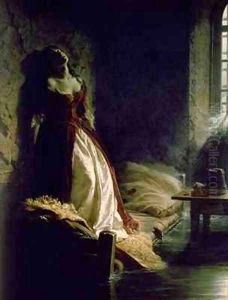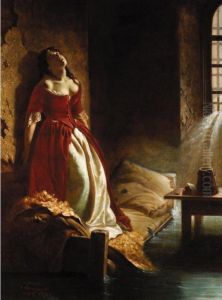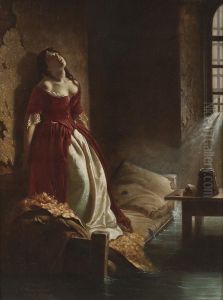Konstantin Dmitrievich Flavitsky Paintings
Konstantin Dmitrievich Flavitsky was a Russian painter associated with the academic style of art. He was born on August 29, 1830, in the city of Podozersk, now in the Republic of Karelia, Russian Federation, to a family of clergy. Flavitsky's early life was shaped by his father's position in the church, which provided him with a strong moral and spiritual upbringing that would later be reflected in his artistic work.
In 1847, Flavitsky began his formal artistic education at the Imperial Academy of Arts in Saint Petersburg, where he studied under the tutelage of renowned artists such as Pyotr Basin and Alexey Tarasovich Markov. His time at the academy was marked by his dedication and skill, and he was awarded medals for his achievements, including a gold medal for his painting 'Priam Begging Achilles for Hector’s Body' in 1861. This success granted him a scholarship to study abroad.
During his studies in Italy, Flavitsky was deeply influenced by the Renaissance masters, and this impact was evident in his works, which combined academic traditions with meticulous attention to detail and historical accuracy. One of his most famous paintings, 'Princess Tarakanova', created in 1864, reflects his penchant for dramatic and emotional subjects. This painting, which depicts the tragic fate of a woman claiming to be the daughter of Empress Elizabeth of Russia, locked in a cell during the flooding of St. Peter and St. Paul Fortress, gained him considerable acclaim.
Despite his success, Flavitsky's career was short-lived. His health began to deteriorate, and he returned to Russia, where he struggled with illness during the latter part of his life. Konstantin Dmitrievich Flavitsky died on September 3, 1866, in Saint Petersburg, at the young age of 36. His legacy remains in the form of his historical and genre paintings that are significant examples of mid-19th century Russian art and reflect the academic style of painting prevalent during his time.




